UPSC GS 1
Mary Poonen Lukose
- News: Mary Poonen Lukose was the first woman member of a legislative council from an Indian princely state (Kerala).
- Early Life and Education:
-
- Mary Poonen was born on August 2, 1886, in Aymanam village, Kottayam district, Kerala.
- She enrolled in history at Maharaja’s College, becoming the first woman graduate of Madras University in 1909.
- Became the first woman from Kerala to earn a medical degree, specializing in gynaecology and obstetrics.
-
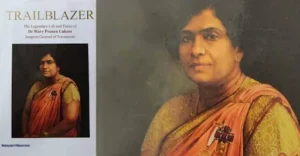
- Medical Career:
-
- She worked briefly as a physician in London during the Great War before returning to Travancore in 1916 after her father’s death.
- Initiated a midwifery training programme for the children of local midwives, improving home birth safety.
- In 1924, became the first woman to head the Health Department of Travancore.
- Became the first woman Surgeon General of Travancore in 1938, considered the first woman Surgeon General in the world.
- Credited as one of the founders of Kerala’s healthcare system.
-
- Political Career:
-
- Nominated to the Council in 1924 by Queen Sethu Lakshmi Bai, becoming the first woman member of a legislative council in an Indian princely state.
- Re-elected multiple times, serving until 1937.
-
- Recognition and Legacy:
-
- The Maharaja of Travancore conferred upon her the title of Vaidyasasthrakusala in the 1940s.
- Honoured with the Padma Shri in 1975, a year before her death at the age of 90.
-
Read also: Discover QUAD: Everything You Need to Know | UPSC
Koodiyattom
- News: Cholliyattom’, a collective of young Koodiyattom artists in Kerala has now evolved into a platform where artists following different styles come together to preserve the art form.
- Definition:
-
- Koodiyattom is one of the oldest traditional theatre forms of Kerala, rooted in Sanskrit theatre traditions.
- The term comes from Malayalam where “kuti” means “combined” or “together,” and “attam” means “acting,” thus Koodiyattom translates to “combined acting.”
-
- Key Elements and Characters: The primary characters involved in this theatre form include:
-
- Chakyaar (actor).
- Naambiyaar (instrumentalists).
- Naangyaar (those performing women’s roles).
- Neta abhinaya (eye expressions) and hasta abhinaya (gestures) are significant in its stylized and codified theatrical language.
-
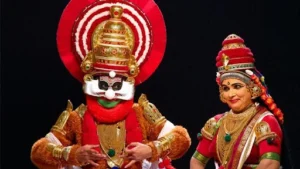
- Pakarnattam:
-
- Pakarnattam is a key aspect of Koodiyattom where actors embody and emote both male and female roles.
- It involves switching between genders and portraying multiple characters simultaneously, showcasing a challenging skill set.
-
- Temple Theatres (Kuttambalams):
-
- Kuttambalams are permanent theatre structures attached to major temples in Kerala, specifically designed for Koodiyattom performances.
-
- Performance Style:
-
- Koodiyattom performances treat single Acts from Sanskrit plays as complete plays.
- Rather than performing the entire Sanskrit text, Koodiyattom focuses on individual acts, presenting them as full-fledged performances.
-
- Global Recognition: In 2001, Koodiyattom was recognized as a UNESCO Masterpiece of the Oral and Intangible Heritage of Humanity.
Lebanon
- News: Israeli strikes on Lebanon have resulted in over 490 fatalities, including more than 90 women and children.
- Location and Borders:
-
- Lebanon is situated on the eastern shore of the Mediterranean Sea in Western Asia.
- Lebanon is bounded to the north and east by Syria, to the south by Israel, and to the west by the Mediterranean Sea.
-
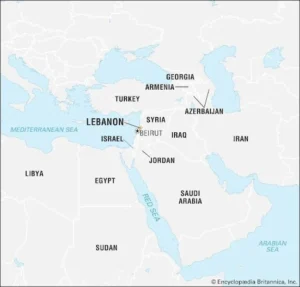
- History:
-
- Lebanon is part of the Fertile Crescent, known as the “Cradle of Civilization.”
- Byblos, located 30 km north of modern Beirut, is the oldest continuously inhabited city in the world.
- Lebanon has been ruled by several ancient empires, including Phoenician, Greek, Armenian, Egyptian, Hittite, Babylonian etc.
- From 1516 to 1918, Lebanon was part of the Ottoman Empire.
- After the fall of the Ottoman Empire in 1920, Lebanon came under French rule, leading to the creation of the State of Greater Lebanon.
- Lebanon gained full independence in 1943 following the withdrawal of French troops.
-
- Geography:
-
- Lebanon consists of a narrow strip of land and is one of the world’s smaller sovereign states.
- The Lebanon Mountains, rising up to 9,800 feet (3,000 meters), run through the center of the country.
- The Bekaa Valley, a high and fertile region, lies between the two mountain ranges.
- The valley is watered by the Litani River, the only river in Lebanon that flows year-round.
-
UPSC GS 2
Emergency Provisions
- News: The renewed violence in Manipur has once again triggered the discussion around Centre-State relations and the use of emergency provisions by the Centre.
- What is our Federal Set-Up?
-
- India is a federation with governments at the Centre and the States.
- The Seventh Schedule of the Indian Constitution distributes power between the Union and States.
- Maintaining law and order is the responsibility of State governments under this distribution.
-
- Emergency Provisions: Part XVIII of the Constitution provides for emergency provisions:
-
- Article 355:
- Imposes a duty on the Centre to protect every State from external aggression and internal disturbances.
- Requires the Centre to ensure that every State government operates according to the Constitution.
- Article 356:
- Allows for the imposition of the President’s rule if a State government fails to function according to constitutional provisions.
- Unlike India, constitutions of countries like the U.S. and Australia do not allow for the removal of State governments by their federal governments.
-
- B.R. Ambedkar’s view on Article 355 and 356:
-
- B.R. Ambedkar emphasized that any Centre interference under Article 356 must be justified by obligations imposed by the Constitution.
- Article 355 was incorporated to prevent arbitrary or unauthorized use of Article 356.
-
- What have the Courts Ruled?
-
- Ambedkar had hoped that Articles 355 and 356 would remain “dead letters” and never come into effect.
-
- Misuse of Article 356:
-
- On several occasions, Article 356 was misused to remove elected State governments.
- Reasons for misuse varied from losing Lok Sabha elections to deteriorating law and order.
-
- S.R. Bommai case (1994):
-
- The Supreme Court restricted misuse of Article 356.
- The Court held that Article 356 should only be imposed in cases of constitutional breakdown, not for political reasons or ordinary law and order issues.
- The imposition of the President’s rule is subject to judicial review.
-
- Interpretation of Article 355:
-
- Initially, the Supreme Court in State of Rajasthan vs Union of India (1977) had a narrow interpretation of Article 355.
- In subsequent cases like Naga People’s Movement of Human Rights (1998), Sarbananda Sonowal (2005), and H.S. Jain (1997), the Court expanded the scope of Article 355.
- The Union can take all statutorily and constitutionally available actions to discharge its duty under Article 355.
-
- What are the Suggestions? Various commissions have studied Centre-State relations and provided recommendations:
-
- Sarkaria Commission (1987).
- National Commission to Review the Working of the Constitution (2002).
- Punchhi Commission (2010).
- These commissions agree that:
- Article 355 imposes a duty on the Union and grants it power to take necessary actions.
- Article 356 should only be used as a last resort, in situations of utmost gravity and urgency.
-
Quad Cancer Moonshot Initiative
- News: Prime Minister Narendra Modi, while participating in the Quad Summit in the US, announced the formation of the Quad Cancer Moonshot Initiative in the Indo-Pacific.
- Definition:
-
- It has been launched by the QUAD countries: India, United States, Australia, and Japan.
-
- Aim:
-
- It aims to implement innovative strategies for the prevention, detection, treatment, and alleviation of cancer’s impact on patients and families.
-
- Focus areas include:
-
- Cervical cancer screening expansion.
- Increasing vaccinations against human papillomavirus (HPV), a sexually transmitted infection and the primary cause of cervical cancer.
- Treatment support for cancer patients.
-
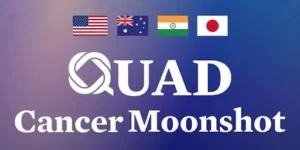
- India’s Contribution:
-
- India will provide technical assistance to countries in the Indo-Pacific region on Digital Public Infrastructure (DPI) for cancer screening, care, and treatment continuum.
- India has committed US $10 million to the WHO’s Global Initiative on Digital Health for cancer-related activities.
- India will supply HPV sampling kits, detection tools, and cervical cancer vaccines worth $7.5 million to the Indo-Pacific region.
- India is developing an AI-based treatment protocol for improved cancer care.
- India will also provide support for:
- Radiotherapy treatment.
- Capacity building for cancer prevention in the Indo-Pacific region.
-
- Significance: India’s contribution aims to:
-
- Strengthen local efforts in preventing and detecting cervical cancer.
- Empower communities with affordable and accessible tools for early detection and prevention.
- Support vaccination programs to reduce the disease burden across the Indo-Pacific region.
-
Clean Economy and Fair Economy under the Indo-Pacific Economic Framework (IPEF)
- News: India has recently signed the clean and fair economy agreements of the 14-member Indo-Pacific Economic Framework (IPEF) for Prosperity to enhance cooperation in these areas.
- Clean Economy Agreement under Pillar-III of IPEF:
-
- Objective: The agreement focuses on boosting technical cooperation, workforce development, and investment in climate-friendly technologies.
- Project Financing: It facilitates project financing and supports joint collaborative projects, particularly targeting MSMEs.
- Global Value Chains: Aims to help Indian companies integrate further into global value chains through various initiatives.
-
- Investment Initiatives:
-
- IPEF Catalytic Capital Fund and the IPEF Accelerator are designed to support green energy and climate resilience.
- Sembcorp (Singapore-based) has committed ₹36,238 crore to establish a green ammonia plant in Thoothukudi.
- The IPEF Catalytic Capital Fund received an initial USD 33 million (₹273.9 crore) from Australia, Japan, Korea, and the USA.
- The PGI Investment Accelerator secured USD 300 million (₹2,490 crore) in funding from the U.S. International Development Finance Corporation (DFC), focusing on energy transition and climate investments.
-
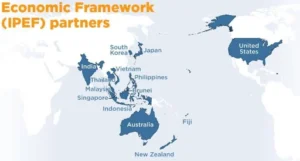
- Fair Economy Agreement under Pillar-IV of IPEF:
- Objective: Aims to enhance transparency and predictability in trade and investment across the Indo-Pacific region.
- Key Focus:
-
- Combating corruption.
- Improving tax transparency.
- Facilitating asset recovery.
-
- Support for India: The agreement supports India’s efforts in:
-
- Curbing money laundering.
- Preventing terror financing.
- Strengthening cross-border investigations and tax administration.
-
- Indo-Pacific Economic Framework for Prosperity (IPEF):
-
- Launch: The Indo-Pacific Economic Framework for Prosperity (IPEF) is an economic initiative launched by the U.S.A. President Joe Biden in 2022.
- Objective: Provides a platform for countries in the Indo-Pacific region to collaborate on advancing resilient, sustainable, and inclusive economic growth.
- Aims to contribute to cooperation, stability, and prosperity in the region.
- Member Countries: It has 14 partner countries: Australia, Brunei Darussalam, Fiji, India, Indonesia, Japan, the Republic of Korea, Malaysia, New Zealand, Philippines, Singapore, Thailand, U.S.A. and Vietnam.
- Nodal Agency: The Department of Commerce is the nodal agency for IPEF engagements.
- Four Pillars of Cooperation:
- Trade
- Supply Chain
- Clean Economy
- Fair Economy
-
UPSC GS 3
Exercise Eastern Bridge VII
- News: The Indian Air Force (IAF) has successfully completed Exercise Eastern Bridge VII with the Royal Air Force of Oman (RAFO) at the RAFO airbase in Masirah.
- Exercise Location: It was held at the RAFO airbase in Masirah, Oman.
- Participants:
-
- Indian Air Force (IAF) deployed MiG-29 and Jaguar aircraft.
- The Royal Air Force of Oman (RAFO) deployed F-16 and Hawk aircraft.
-
- Operations:
-
- Focused on complex air operations, air-to-air combat drills, and mission scenarios.
- Aimed at enhancing the strategic and tactical capabilities of both forces.
-
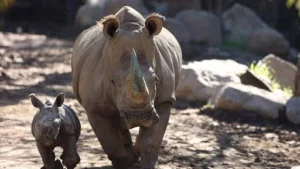
- Objectives:
-
- Foster military cooperation between India and Oman.
- Improve interoperability between the IAF and RAFO for joint operations.
- Enhance operational coordination and tactical skills for better performance in real-world scenarios.
-
- Training and Operations:
-
- Complex Air Operations: Designed to simulate real-world mission scenarios and challenges.
- Air-to-Air Combat Drills: Focused on improving tactical combat capabilities in the air.
- Strategic Mission Scenarios: Included mission planning and execution to improve strategic and operational proficiencies.
-
Greater One-Horned Rhino
- News: World Rhino Day is celebrated annually on September 22.
- Greater One-Horned Rhino:
- Common Name: Greater One-Horned Rhino, also known as Indian Rhinoceros.
- Scientific Name: Rhinoceros unicornis.
- Size: It is the largest of the three Asian rhino species and one of the largest overall, alongside the African white rhino.
- Geographical Range: Found in India and Nepal, particularly in the foothills of the Himalayas.
- Historical Range: Once roamed freely in the floodplains and forests alongside the Brahmaputra, Ganges, and Indus River valleys.
- Population: Kaziranga National Park in Assam, India, holds the largest population with 2,401 individuals.
- Habitat: Semi-aquatic, often residing in swamps, forests, riversides, and areas near nutritious mineral licks.
- Features:
-
- Size and Weight:
- Males weigh approximately 2,200 kg (nearly 4,840 pounds).
- Height ranges from 170 to 186 cm (67 to 73 inches).
- Length ranges from 368 to 380 cm (145 to 150 inches).
- Physical Characteristics:
- Identified by a single black horn measuring 8-25 inches long.
- Grey-brown hide with distinct skin folds, giving an armor-plated appearance.
- Behavior:
- Primarily solitary, except for females with small calves.
- Males maintain loosely defended territories.
- Diet: Primarily a grazer, consuming grasses, as well as leaves, branches, fruit, and aquatic plants.
-
- IUCN Red List: Classified as Vulnerable.
- World Rhino Day:
-
- It is celebrated annually on September 22 to raise awareness about the five endangered rhino species: Javan, Sumatran, Black, Greater One-Horned, and White rhinos.
- Three species of rhino—black, Javan, and Sumatran—are critically endangered.
-
Read also: Bombay High Court Strikes Down Centre’s Amended IT Rules | UPSC
Hilsa Fish
- News: Bangladesh’s interim government recently clarified that the hilsa fish being sent to India is not a gift but an export aimed at generating foreign currency for Dhaka.
- Hilsa Fish:
-
- Hilsa fish, also known as Ilish, is a species of fish related to herring and belongs to the family Clupeidae.
- It holds an exceptional place in the culinary traditions and social customs of Bengal, being a celebrated fish in many significant events.
-
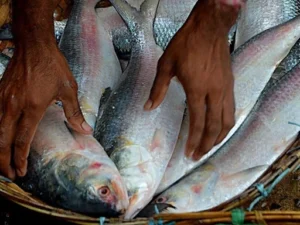
- Distribution:
-
- Hilsa fish is found in rivers and estuaries across Bangladesh, India, Pakistan, Myanmar, and the Persian Gulf.
- It has a historical migratory route to the Ganga river system in Allahabad from Bangladesh.
- Although Hilsa is primarily a saltwater fish, it migrates to the freshwater of the Ganges from the Bay of Bengal for breeding.
-
- Breeding Migration:
-
- Hilsa engages in breeding migration in three major river systems of the Indo-Gangetic and Brahmaputra river networks, namely the Ganga, Brahmaputra, and Meghna rivers.
-
- Significance in Bangladesh:
-
- Bangladesh produces around 70% of the world’s Hilsa, making it a matter of national pride.
- Hilsa is recognized as the national fish of Bangladesh, highlighting its cultural and economic importance.
- The Hilsa fish from rivers such as the Ganga, Hooghly, and Mahanadi are highly regarded and often featured in important events and celebrations.
- Conservation Status: According to the IUCN Red List, Hilsa fish is classified as a species of Least Concern.
-
